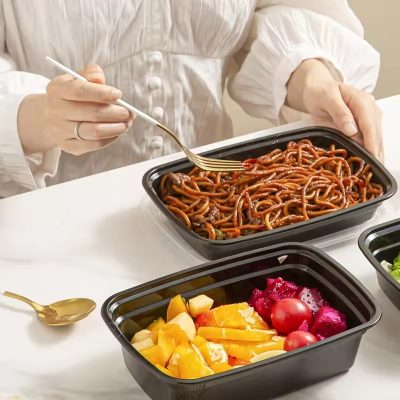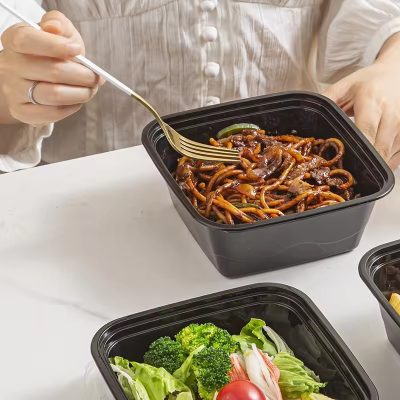Food containers serve as indispensable assets in the food industry, facilitating the storage, transportation, and consumption of various food items. This article explores the significance of food containers, highlighting their core features, advantages, design considerations, and the industry’s commitment to safety and sustainability.
The Significance of Food Containers
Food containers are essential tools for preserving the freshness, flavor, and integrity of food products. They act as protective shields, safeguarding against contamination, spills, and damage during handling and transit, ensuring that food reaches consumers in optimal condition.
Core Features of Food Containers
Material Diversity: Food containers come in a variety of materials, including plastic, glass, stainless steel, and eco-friendly alternatives like bamboo or plant-based materials. Material choice depends on factors such as food type, storage conditions, and environmental impact.
Sealing Mechanisms: Effective sealing mechanisms, such as snap-on lids, vacuum seals, and secure closures, help maintain food freshness and prevent leaks or spills, enhancing convenience and usability.
Temperature Resistance: Many food containers are designed to withstand a range of temperatures, from freezing to microwave heating, allowing for versatile storage and reheating options.
Stackability and Portability: Stackable and nestable designs optimize storage space, while ergonomic shapes and sizes enhance portability for on-the-go use.
Advantages of Food Containers
Preservation of Freshness: Properly sealed containers help extend the shelf life of food, reducing waste and saving money for consumers and businesses alike.
Convenience and Versatility: Food containers offer convenience for meal prep, leftovers, and portion control, catering to busy lifestyles and diverse dietary needs.
Safety and Hygiene: Food-grade materials and leak-proof designs ensure food safety and hygiene, minimizing the risk of contamination and maintaining product quality.
Sustainability: Increasingly, food containers are being designed with eco-friendly materials and reusable options to reduce single-use plastic waste and promote environmental sustainability.
Design Considerations
Material Selection: Prioritizing food-safe materials that are durable, non-toxic, and recyclable or compostable, minimizing environmental impact and health risks.
Functional Design: Incorporating user-friendly features such as easy-grip surfaces, stackable shapes, and clear labeling for efficient storage, organization, and identification.
Environmental Impact: Embracing sustainable manufacturing practices, such as reducing packaging waste, using renewable resources, and optimizing production processes to minimize carbon footprint.
Regulatory Compliance: Ensuring compliance with food safety regulations and standards set forth by regulatory agencies like the FDA, EFSA, and others to guarantee consumer safety and confidence.
Safety and Sustainability
Food container manufacturers adhere to rigorous safety and sustainability standards to ensure product quality and environmental responsibility. This includes rigorous testing for food contact materials, compliance with recycling and waste management regulations, and ongoing efforts to reduce packaging waste and promote circular economy practices.
Conclusion
In conclusion, food containers play a vital role in the food industry by providing practical solutions for storing, transporting, and consuming food. By prioritizing functionality, safety, and environmental consciousness in design and manufacturing processes, the industry can continue to meet the evolving needs of consumers while minimizing its environmental footprint. With a commitment to innovation and sustainability, food containers will remain indispensable tools for preserving food quality and promoting a healthier, more sustainable future.







